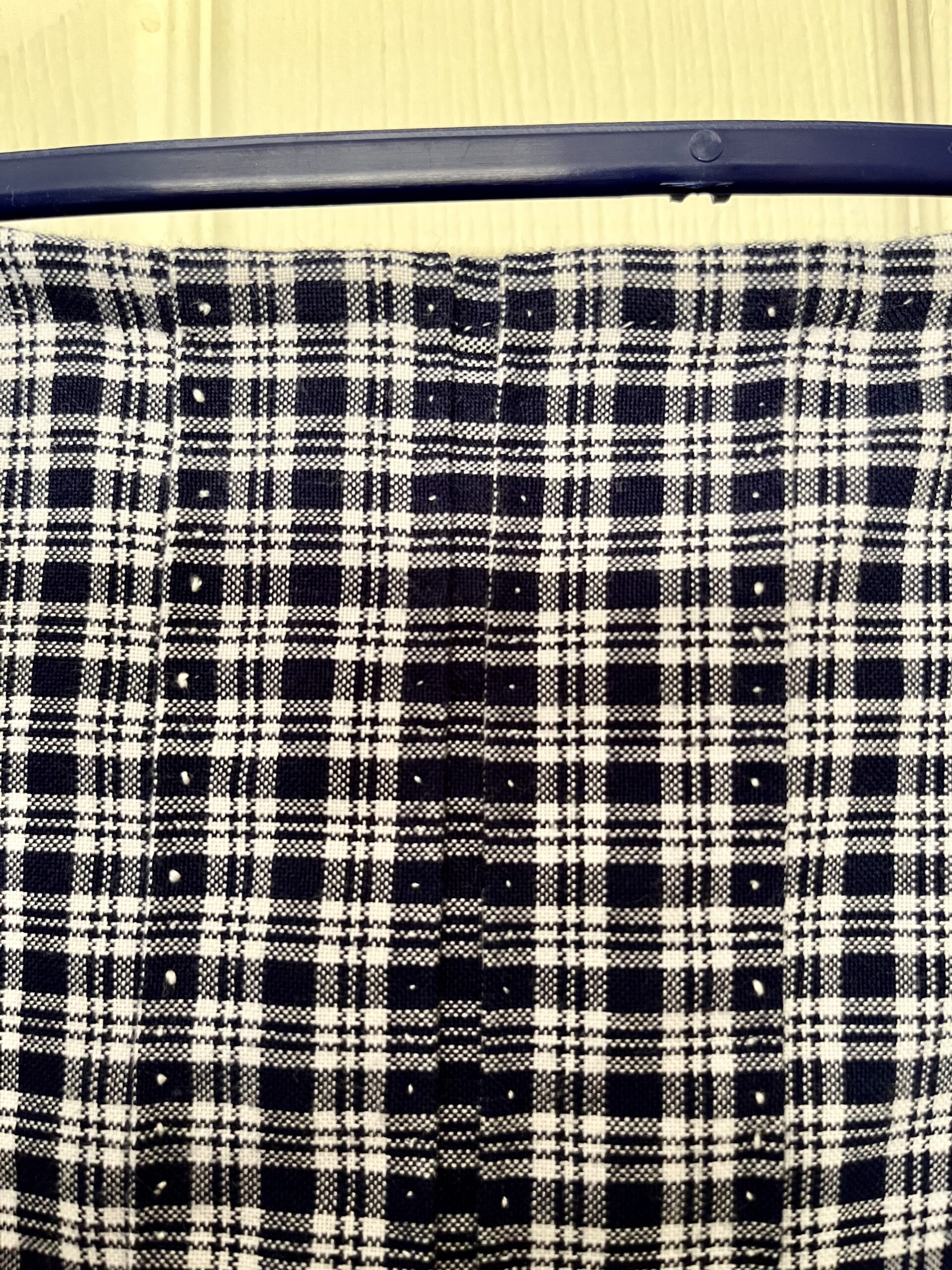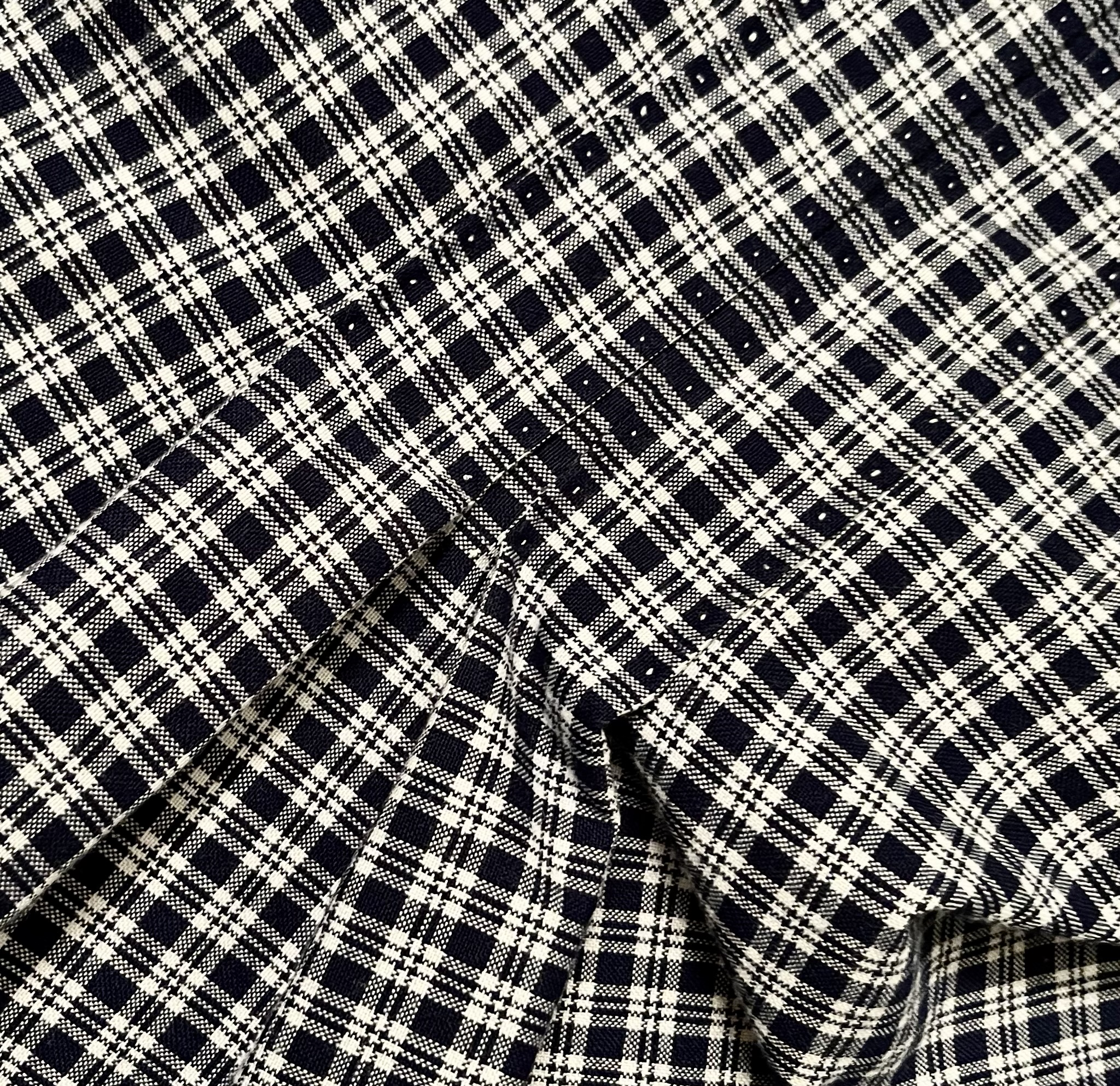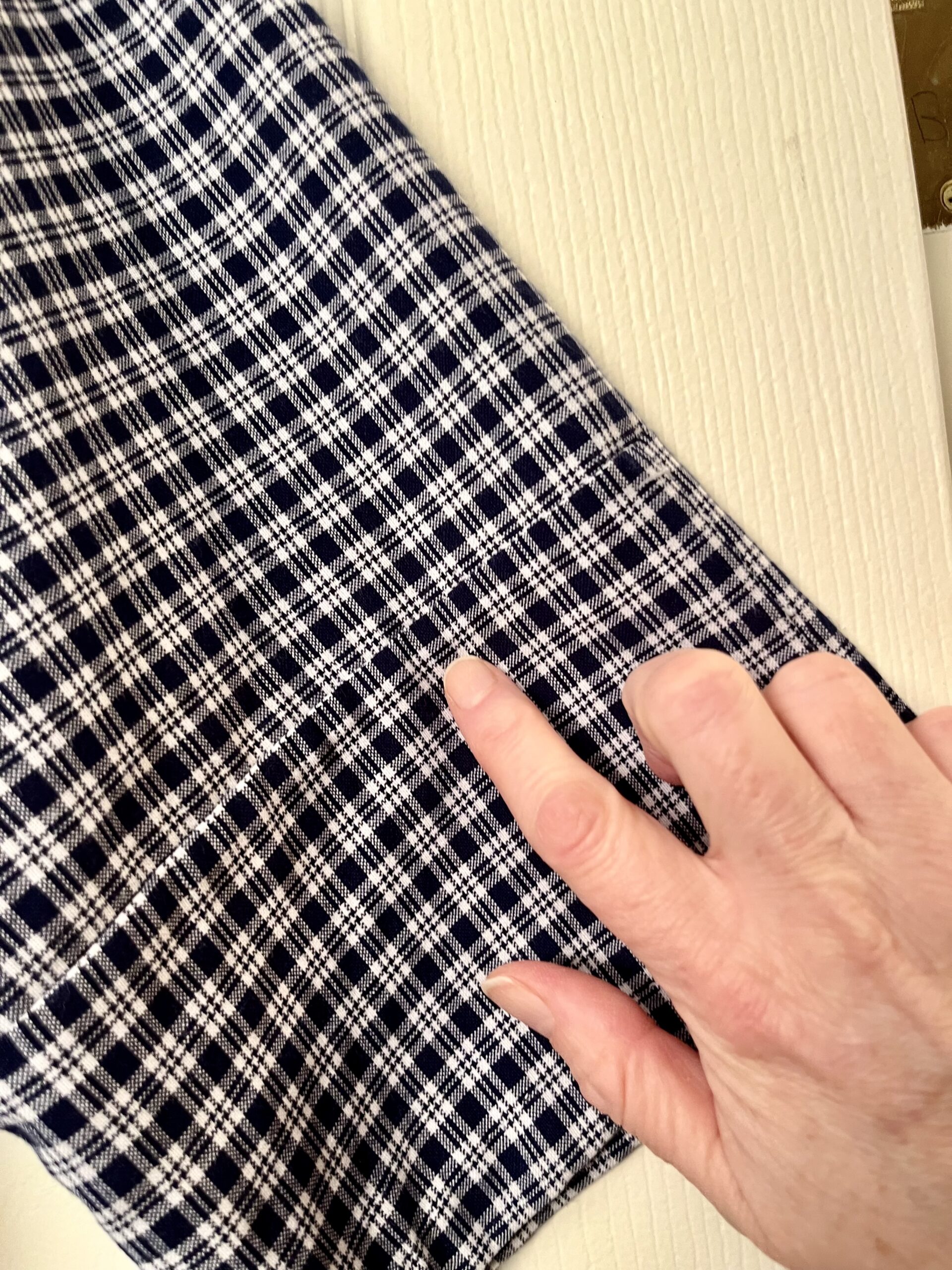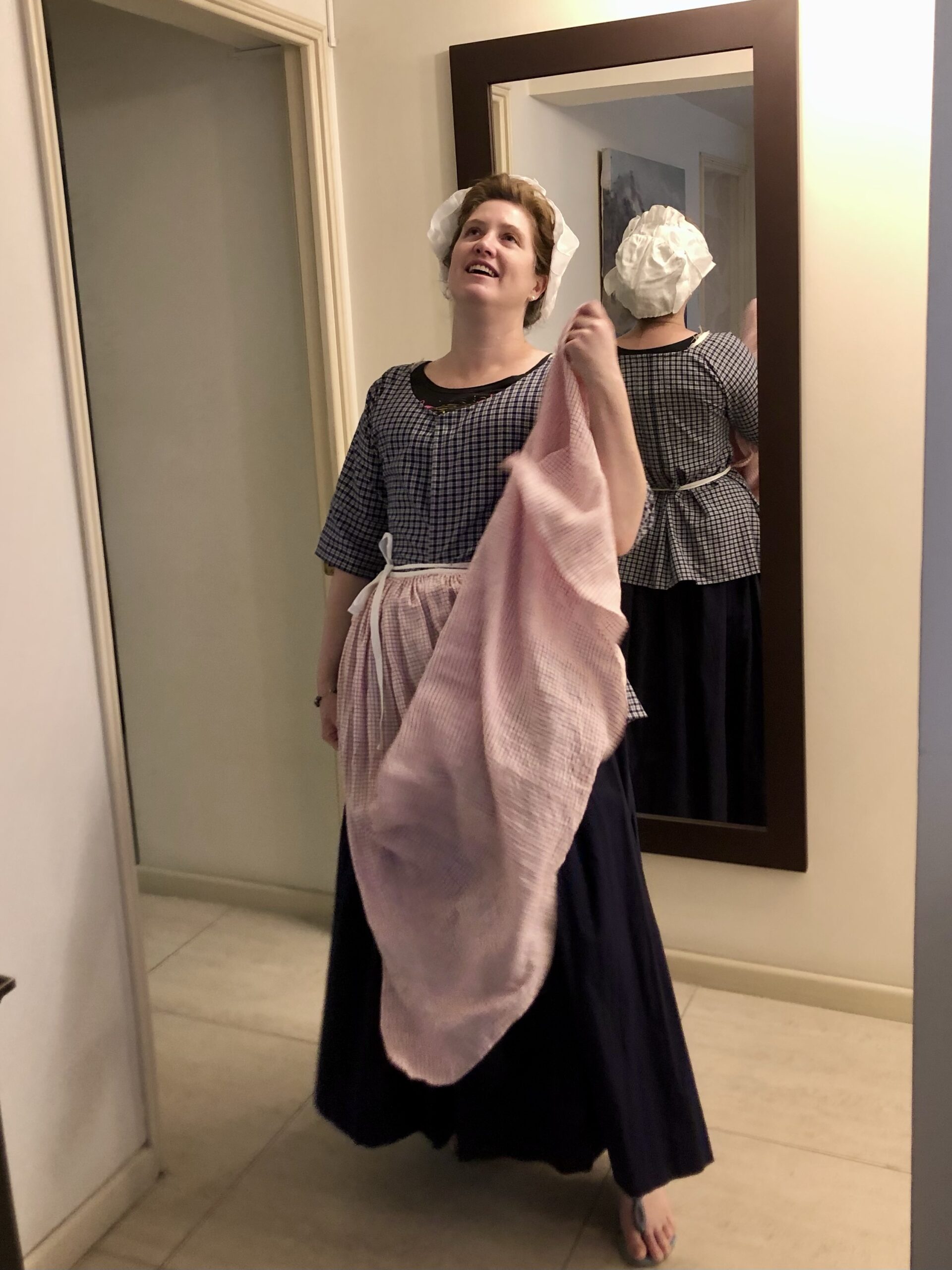
An 18th Century short gown is the same sort of garment as a bed gown (which I talk about making here), except, well, shorter.
Sort of. Mostly.
Sometimes.
Short gowns and bed gowns are both versions of the wrapping gown – a loosely fitted, wrap-front garment that covers your upper arms, your torso and a varying percentage of your upper legs. These gowns needed enough fabric to get over the hips, tummy and bottom of a woman who’s been through a few pregnancies, so extra width is often built into the back and sides through pleats. They are breathable, washable, grubby-up-able and highly adaptable to size and shape. They were the T-shirt of the 18th Century – everyday clothing for doing the scrubby stuff.
Both shape and name being something of a moveable feast, I tend to use the term bed gown when the gown hits the mid-thigh or below, and short gown when it’s…. shorter. But in all their variations, they’re easy to pattern and quick to sew – and paired with a plain petticoat and apron, can make you a basic 18th Century ensemble (which I talk about making here!) in very short (sic) order!
And with that introduction out of the way, may I present my own first short gown – the Blue Flannel Short gown of Hard Work.
Except it really wasn’t – it went together very smoothly. I found a yard or so of a soft indigo check brushed cotton at DuckTelas in Barrio Independencia, Santiago’s fabric district. It’s not a period-appropriate fabric, but it was what I could get, and it looked right for a short gown.
I measured the short gown from the diagram in Sharon Burnston’s Fitting and Proper, and the measurements seemed to fit me, so I scaled it up and cut it out. This particular style of short gown, didn’t even need pleats at the sides – the side seam flared out nicely enough to skim my hips.
I cut the garment, sewed the side seams by machine, and felled them by hand. @adventures_in_mantuamaking fitted the back pleats on me, and I stitched the pleats down with a spaced back stitch in white linen thread – the white stitches making pretty white polka dots on the indigo blue squares.

To take advantage of the striping, I sewed the pleats as two parallel box pleats, with a dark blue stripe between the two. Period? No idea! But I like the way it looks!

Due to a narrow fabric width, the sleeves are pieced.

Sleeves sewn, I hemmed all of the short gown’s raw outer edges, rounding off the hanging corners at the bottom of the side seams.
An 18th century short gown as pretty as this one needs accessorizing. A yard of red check linen from Burnley & Trowbridge made an apron. I cut a width of fabric to a length that came roughly to my mid-calves, and hemmed the sides and bottom with a small, neat running stitch.
I ran three rows of spaced gathering stitches along the top, and gathered the width of the fabric in in large stroked gathers (not being particularly precious about the pleat spacing), and whipped the apron to a cotton waistband.

I already had an indigo cotton petticoat, and I plopped on a suitably maid-servant-y lappet cap made from a pattern by Good Wives Linens. It was a blistering hot summer day, so as a concession to the heat I pinned the lappets up onto my head.

As another concession to the heat, I forewent the stockings and leather mules and kicked on my trusty havaiana flip flops instead. (If they could have worn havaianas back in the 18th Century, they would have, thank you.) The heat certainly helped to sell it – I might be a 21st century lady who hand-sews for leisure, but wearing flannel over a pair of stays in midsummer, boy did I look ready to stage a tableau of hard work!

If you’re interested in making your own 18th Century short gown or bed gown, here are some wonderful makes and makers to get you started!
History but Make it Fashion
Fashionable Frolick
What the Red Herring

2 thoughts on “An 18th Century Short Gown”